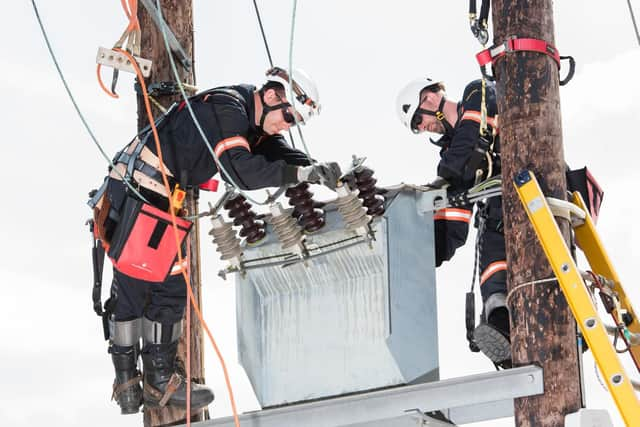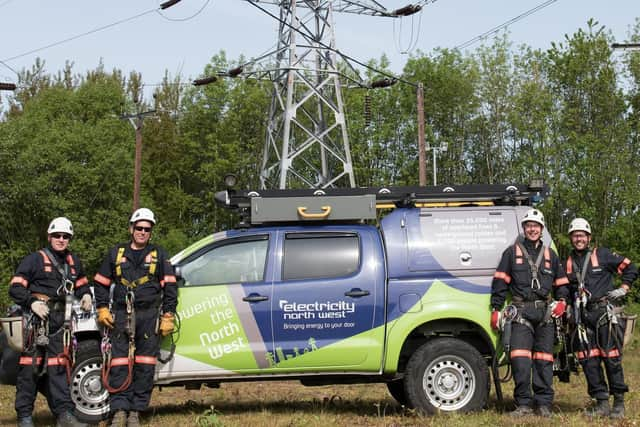Electricity North West: the power behind Lancashire's Netflix, kettles, and hospitals


One of 14 electricity distribution network operators across the UK, the company is responsible for keeping teenagers entertained and pensioners warm, for keeping your kettle boiling and your Netflix streaming. These are vital modern day services, and the company has been providing for some five million customers ever since it purchased the network in 2007.
Founded in 1990 as Norweb, ENW operates and maintains a vast cobweb of hardware, managing 13,000 km of overhead power lines and 44,000 km of underground cables, all working away silently day and night to meet the electricity demands of countless households in Lake District hamlets and Manchester city centre apartments, as far north as Carlisle and as far south as Stockport.
Advertisement
Hide AdAdvertisement
Hide AdIt goes without saying that theirs is important work. "We have data which tells us what equipment we have, where it is, and what condition it's in; we use that to maintain the quality of supply, to understand where we need to invest, and to pinpoint any issues," explained asset data manager Dan Wilson. "I manage that data and focus on how we use it to be more efficient.


"I like seeing the results of my work on a daily basis and because it's something people rely on everyday, there's a social benefit in what you're trying to achieve," added Dan, 34. "Nowadays, it's more than just lights, it's keeping people's lives running, and the next step is using our data to control the network to use it more smartly. That's exciting."
Constant improvement is the name of the game: the company - with depots all over the region, including one in Preston - is on course to invest £1.9bn into their services by 2023 and have even opened a £2m purpose-built training academy for emerging engineering talent. And it's the responsibility of investment programme manager Ebrahim Hajat to assess where that budget investment is required.
"My job is to look at what areas we are best placed to invest in to ensure that we can offer the customer the best service possible," said Ebrahim, who was celebrating his 50th birthday when we spoke. "We've got to work within our budget to make sure that our customers are being provided for in the most efficient way possible, so I like [the problem-solving aspect] of the job."
Advertisement
Hide AdAdvertisement
Hide AdThe future of electricity is green, and ENW is already looking into the open expanse of the 21st century and de-carbonising its supply. This transition is understandably vital in the fightback against the climate emergency, and the company have committed to investing £63.5m over the next four years to decrease carbon emissions and aim to be carbon-free by 2038. And that's not the only front on which the company is forward-thinking.


Already moving into a more digitally-driven world, ENW is also at the forefront of data analysis, using thousands of statistical points to ensure that the flow of power is there when we most need it. This is where head of asset management Jonathan Booth comes in. Tasked with priming infrastructure for demand in years to come, I ask - somewhat glibly - if he's in the business of predicting the future.
Jonathan, 46, chuckles. "We're able to get a feel for how things are developing from data; we use a lot more data analysis in our work these days," he says. "This allows us to look at things like social demographics and current usage to ensure that we are best placed to keep everyone's power supply flowing as demands change.
"For example, there's usually a tea-time in November when the weather gets cold and everyone suddenly sticks the heating on," he adds. "And there are times of the day when everyone gets home, possibly sticks their electric car on charge, and then puts the kettle on. Our data lets us know when these things happen."